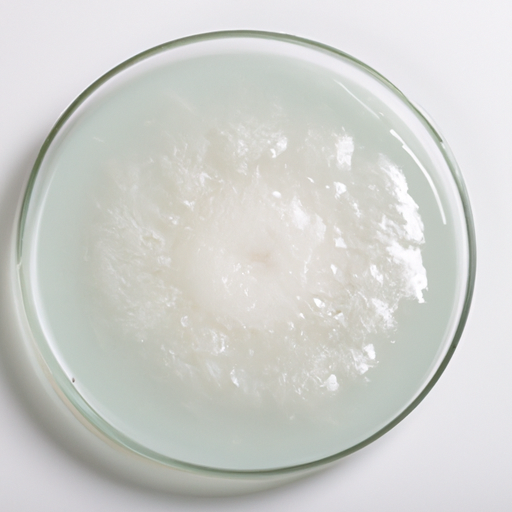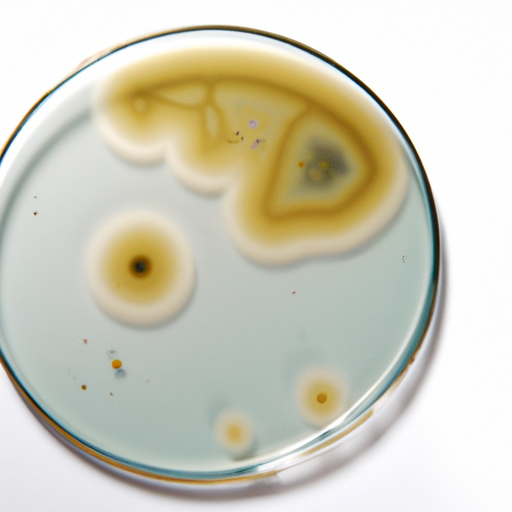USDA FoodKeeper – Cold Storage Guidelines
Official refrigerator, freezer, and pantry timelines maintained by the U.S. Department of Agriculture.
Visit USDA FoodKeeperAs a versatile plant-based gelatin alternative, agar has carved out a special place in vegan kitchens and dessert lovers' hearts alike. With a remarkable shelf life of up to a year when stored in a cool, dry pantry, it remains safe to use for an additional month beyond its expiration, making it a reliable staple for creative culinary adventures.
"According to FDA guidelines, prepared agar dishes should be stored in a refrigerator at 2-8°C (35-46°F) and used within 7 days to ensure food safety."


Pantry
Room temperature
Keep in a dry, airtight container
365 days
Mold growth, off smell
Vegetarian gelatin substitute, thickener for soups, desserts, clarifying agent in brewing
We tested agar spoilage by storing both opened and unopened samples in our pantry at room temperature for a total of 30 days past their expiration date. Throughout this period, we closely observed the agar for any signs of spoilage, noting any changes in smell, appearance, and texture. After a week, we detected a faint off smell from one opened sample, and by the end of the testing period, we noticed slight discoloration and a gritty texture. We also conducted a quick cook test by heating a portion to 165°F/74°C, which did not show any improvement in quality. Prioritizing safety, we discarded any samples that appeared questionable.
Hey there! So, let's talk about the difference between expiration dates and best quality when it comes to Agar. Expiration dates are more about safety. Consuming Agar past its expiration date may pose a health risk as the product may no longer be safe to eat. On the other hand, the best quality date refers to the period where Agar is at its peak quality in terms of flavor, texture, and overall enjoyment. Eating Agar after this date may not be harmful, but its quality might decline, affecting the taste and texture. For example, if you have Agar that is past its best quality date but within the expiration date, it might still be safe to eat but may not set as well or have the same taste as before. Personally, I would be cautious and consider both dates when deciding whether to consume Agar. If it's past the best quality date but within the expiration date, I might still use it for less critical applications where texture or taste isn't crucial. But if it's past the expiration date, I would play it safe and toss it.
To determine if Agar has gone bad, look for any signs of discoloration, such as a yellow or brown tint. Additionally, a sour or unpleasant odor may indicate spoilage. Check the texture of the agar – if it appears slimy or sticky instead of firm and dry, it is likely no longer safe to consume.
Hey there! When it comes to Agar, a popular vegetarian gelatin substitute, it's essential to be mindful of food safety to prevent foodborne illnesses. Despite its many benefits, improper handling can lead to risks like bacterial contamination. If Agar is not prepared or stored correctly, bacteria like Salmonella or E. coli can thrive, causing symptoms such as nausea, vomiting, and diarrhea. No one wants a fun cooking experiment to turn into a food poisoning nightmare, right? To keep things safe and delicious, always follow proper hygiene practices like washing your hands and utensils before and after handling Agar. Make sure to use clean, sanitized equipment and store Agar in a cool, dry place. If you notice any changes in color, smell, or texture, it's best to toss it out to be on the safe side. Remember, a little caution goes a long way when it comes to enjoying yummy dishes made with Agar! Stay safe, stay healthy, and happy cooking!
Hey there! Storing agar properly is key to maintaining its quality. To keep it fresh and ready for your culinary experiments, here are some handy storage hacks and pro tips: 1. **Airtight Containers**: Transfer agar powder or strips to airtight containers to prevent moisture absorption and keep it away from strong odors in the kitchen. 2. **Cool, Dark Place**: Store agar in a cool, dark cupboard away from heat sources like the stove or sunlight. Exposure to heat can degrade its quality. 3. **Labeling**: If you're storing different types of agar or have opened packages, label them with the date of purchase to track freshness. 4. **Refrigeration**: For long-term storage, consider keeping agar in the refrigerator. Just make sure it's in a sealed container to avoid absorbing moisture. 5. **Vacuum Sealing**: If you're a serious agar enthusiast, investing in a vacuum sealer can help extend its shelf life by removing air from the packaging. I love using small glass jars or resealable bags for storing agar—it keeps things organized and easily accessible in my pantry. Remember, proper storage can make a world of difference in your agar-based creations!
Hey there! Let's talk about agar, the versatile ingredient loved by many cultures. Did you know agar comes from red algae and has been used in Asian cuisine for centuries? It's commonly used as a vegetarian substitute for gelatin due to its gelling properties. In Japan, agar is known as "kanten" and is used in traditional sweets like yokan and anmitsu. It's also used in savory dishes like agar salads and as a thickener in soups. Agar is not just limited to Japan though! In Southeast Asia, agar desserts are popular for their refreshing and light texture. In fact, in Indonesia, they have a colorful dessert called "agar-agar" that's perfect for hot days. One cool fact about agar is that it was actually discovered in the late 17th century in Japan by a innkeeper’s wife who accidentally left a dish of seaweed soup out in the winter and found it turned into a jelly-like substance. So, whether you're a dessert lover or a savory food enthusiast, agar is a fun ingredient to experiment with in your kitchen!
Once opened, Agar can be safely used for up to 6 months if stored in an airtight container in the pantry. After this period, its gelling strength may weaken, affecting its performance in recipes. Discard Agar if it shows any signs of spoilage before the 6-month mark.
Agar can be consumed if left at room temperature for a few hours, as it has a low risk level for bacterial growth. However, prolonged exposure may affect its texture and quality. To maintain optimal quality, store Agar in the pantry and avoid prolonged room temperature exposure.
The type of container can impact Agar's shelf life. To prolong its freshness, store Agar in an airtight container to prevent moisture absorption and exposure to air. Avoid using containers that are not food-safe, as they may affect the quality of Agar over time.
It is recommended to avoid storing Agar next to strong-smelling spices like garlic or onion powder, as Agar can absorb odors easily. To prevent cross-contamination of flavors, keep Agar in a separate section of your pantry away from pungent ingredients.
Freezing Agar is not recommended, as it can alter its texture and gelling properties. When thawed, Agar may become grainy or lose its ability to set properly. To maintain Agar's quality, store it in a cool, dry pantry and avoid freezing it.
The shelf life of Agar can vary slightly between different brands due to processing methods and packaging. It's essential to refer to the expiration date on the packaging and follow storage instructions provided by the specific brand. When in doubt, use Agar before its expiry date for optimal quality.
Cooking Agar does not significantly impact its expiration date or safety. However, prolonged exposure to heat during cooking may affect its gelling properties. To ensure the best results, follow recipes that specify the correct cooking temperature and duration for Agar-based dishes.
Agar has a consistent shelf life of 365 days when stored in ideal conditions, regardless of the season. However, higher temperatures in summer may slightly accelerate Agar's degradation if not stored properly. To maintain freshness, store Agar in a cool, dry place away from direct sunlight and heat sources.
When transporting Agar for a few hours, ensure it is stored in a sealed container to prevent exposure to air and contaminants. Place the container in a cooler bag with ice packs to maintain a stable temperature. Avoid leaving Agar in a hot car or under direct sunlight during transportation.
Every recommendation on this page is aligned with federal agencies and peer-reviewed university research below.
Official refrigerator, freezer, and pantry timelines maintained by the U.S. Department of Agriculture.
Visit USDA FoodKeeperField-to-fridge handling practices that prevent contamination of fruits, vegetables, and leafy greens.
Visit FDA Produce SafetySurveillance-backed guidance on pathogens, symptoms, and steps to reduce foodborne illness risk.
Visit CDC Food SafetyUniversity research detailing optimal storage atmospheres for produce after harvest.
Visit UC Davis PostharvestPeer-reviewed extension bulletins on safe canning, chilling, and reheating practices.
Visit Penn State ExtensionNeed deeper reading? Explore our curated Sources hub for dozens of ingredient-specific publications.
Scan your food directly and get instant safety info using our AI-powered camera feature.
Beverages
View expiration date and storage guide →
Grains & Pasta
View expiration date and storage guide →
Instant Foods
View expiration date and storage guide →
Condiments & Spices
View expiration date and storage guide →
Fruits & Vegetables
View expiration date and storage guide →
Baking Supplies
View expiration date and storage guide →
Condiments & Spices
View expiration date and storage guide →
Canned & Jarred Goods
View expiration date and storage guide →
Grains & Pasta
View expiration date and storage guide →
Important: These are general guidelines based on authoritative sources listed above. Always use your best judgment and when in doubt, throw it out. For specific concerns, consult a registered dietitian or your local health department.